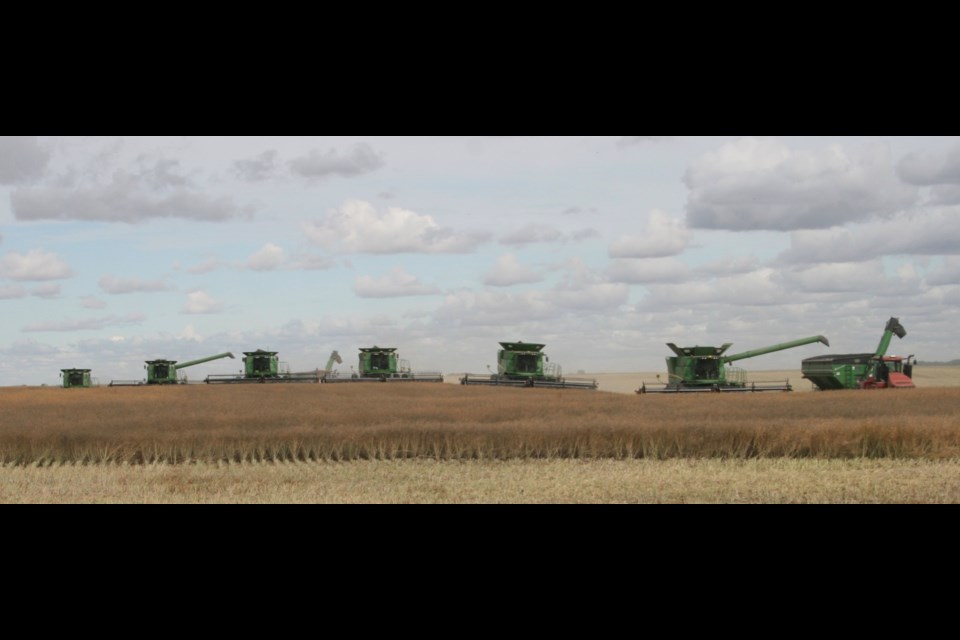Six combines abreast took canola off the field at the Baildon Hutterite Colony, south of Moose Jaw.
The canola was yielding about 40 bushels an acre, not bad considering the dry start to the year.
“It didn’t look like we’d get this in early June,” commented Peter Hofer.
Some of the crops were degraded by rain the week before with bleaching and sprouting, but not the canola.
He worries about the lost $1 billion Canadian canola exports to China.
“Things don’t look good for agriculture right now.
“They (Chinese) are buying from Argentina. We’re never going to get that market back. We have to start growing other crops.”
He speaks about a colony that grew 1,6000 acres of hemp this year.
“They pulverized it and that’s where they get the CBD oil from.
“You know in Hutterite history back in 1500s and 1600s we grew hemp.”
One of the combines gets stuck briefly but manages to manoeuvre out.
Both of the 1,600-bushel grain wagons are tracked as are the tractors pulling them.
The combines chew up 80 acres an hour. They usually do 800 acres to 900 acres a day but have done 1,000 in a day.
Better than $3 million investment in equipment rolls down the field. Three of the combines are cutting their 10th crop. One was with only 275 hours when the owner traded it in.
Jacob Wipf pulls in with lunch, a kit prepared by the colony ladies for each man. Today lunch is a sweet cream soup, two chicken burgers, home fries, raw cucumber, tomato, buns, coffee or water. Awesome.
With no school today for the 20 students, a number of boys are along for the harvest. “Future farmers,” one of the men points to the boys.
The boys will be busy picking potatoes when the colony harvests acres and acres of spuds.
Hofer shows the yield loss monitor he built. The compact device is left on the ground to catch chaff and grain from the combine.
“The ones you buy they break when you drive over them. This one you can drive over.”
Grain collected by the monitor is weighed. A chart shows yield loss so the sieves can be adjusted.
The Baildon colony was established in the 1960s, now operating a grain, dairy, hog, chicken and vegetable farm.
Ron Walter can be reached at [email protected]




